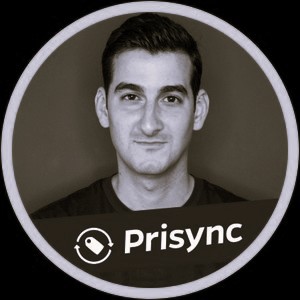Podcast Overview
Pricing is not just about being the cheapest.
60% of merchants state that pricing is the most important factor in an eCommerce business over shipping, packaging and customer engagement. So, are you competitive?
How do you know? That’s half the battle. Paying someone to spend hours crawling your competitors is not ideal when time and resources are scarce.
Do you focus on specific strategies to really use pricing to your advantage? In this episode, Burc breaks down the greatest pricing techniques to remain profitable and tells us his secrets to selling more products for more profit!
eCom@One Presents
Burc Tanir
Burc Tanir is the CEO and Founder at Prisync, a leading competitor price tracking & dynamic pricing software for all sizes of eCommerce companies from all around the world.
In this episode Burc breaks down the greatest pricing techniques to remain profitable and tells us his secrets to selling more products. He also talks about dynamic pricing, the importance of Amazon pricing and where the world of pricing is going over the next 12 months.
Tune into this episode to compete with your customers on a pricing level. Oh, and listen to the advantages of Prisync and how they have revolutionised eCommerce businesses like yourself.
Topics Covered:
2:30 – How Did Burc Get Into The World Of eCommerce
6:00 – What Is The Mission For Prisync, Where Is It Going?
8:40 – Does Pricing Really Matter In The Realm Of eCommerce
14:11 – Different Strategies You Can Use Today To Utilise Pricing To Your Advantage
25:40 – Burc Opinions On People Who Think Building A Brand Is More Important Than Pricing
28:10 – How Dynamic Pricing Impacts Google Shopping Results
32:33 – Why A Strong Pricing Strategy So Important On Amazon
34:20 – The Future Of Prisync, What Is Coming Next Over The Next 12 Months
41:14 – Book Recommendation


